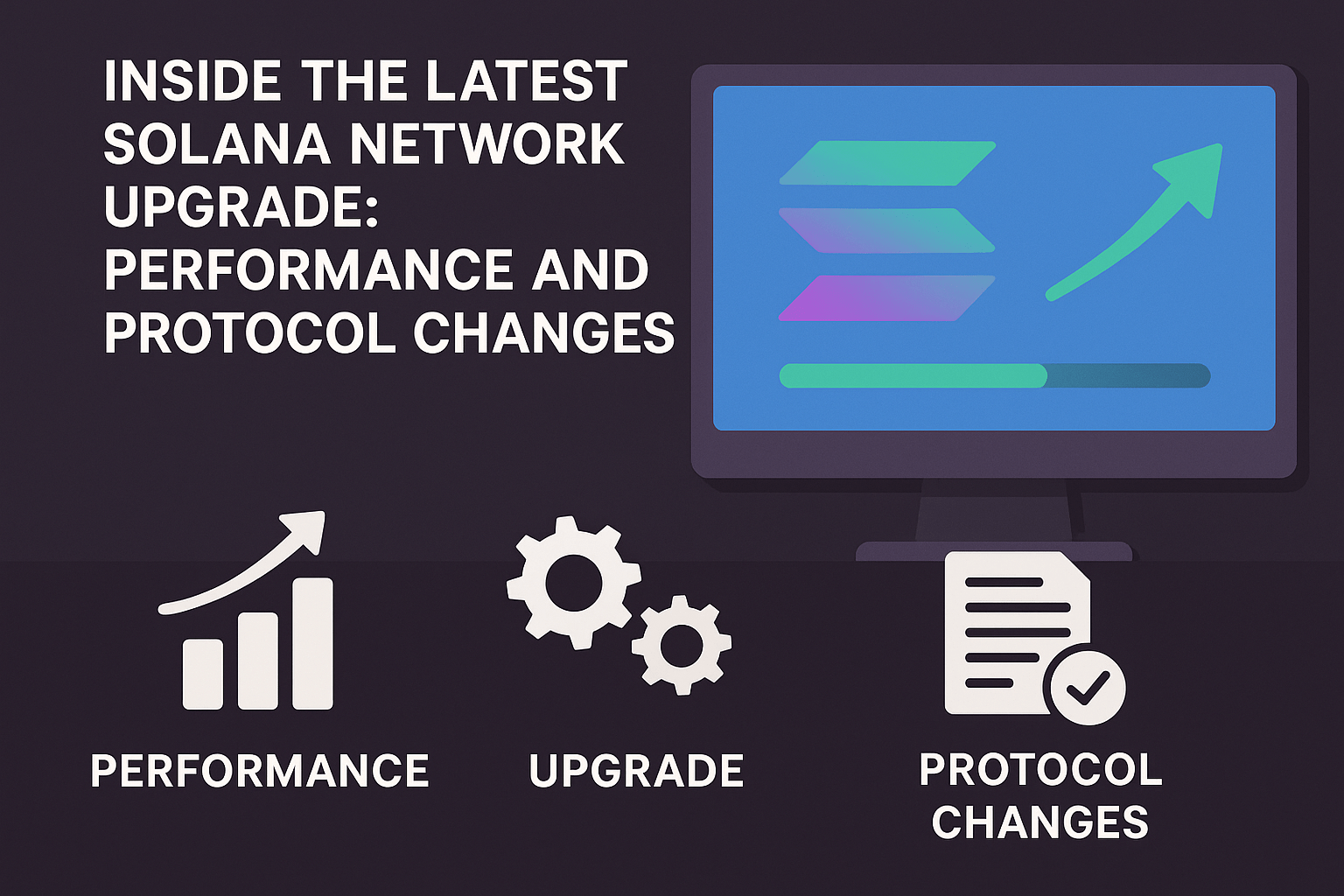Inside the Latest Solana Network Upgrade: Performance and Protocol Changes

For those who have followed Solana’s journey, network upgrades have become a familiar and crucial part of its story. Early on, these upgrades were a relentless pursuit of raw speed. Today, in mid-2025, the narrative has evolved. The latest major upgrade, rolled out in the second quarter, represents a sophisticated leap forward, focusing less on theoretical transactions per second (TPS) and more on network reliability, economic stability, and a seamless user experience, even under extreme load.
This upgrade isn’t about a single flashy feature; it’s a series of deep, interconnected protocol changes that address historical pain points and lay the groundwork for the next generation of decentralized applications. Let’s dive into the core components of this latest upgrade, what has changed under the hood, and what it practically means for everyone building on and using Solana.
The Big Picture: From Raw Throughput to Economic Stability
The core theme of the Q2 2025 upgrade is maturation. While Solana has long proven it can handle immense transaction volume, past periods of intense, concentrated demand (like a viral NFT mint or token launch) sometimes created network-wide issues, such as transaction failures or unpredictable fees.
This latest suite of changes, spearheaded by the core development team at Anza, tackles these issues head-on. The goal is to create a more intelligent, resilient, and equitable system for allocating the network’s precious resources—its blockspace and state-write access.
Deep Dive: Key Protocol Changes in the Latest Upgrade
1. The New Dynamic Fee Market: Taming Congestion
The Problem It Solved: Previously, Solana used a simple priority fee model. If you wanted your transaction processed quickly during busy times, you attached a higher fee. While simple, this created a “global” bidding war. A single, hyped DApp could cause fees to spike across the entire network, temporarily pricing out users of unrelated applications.
The Solution: The upgrade introduces a more granular, localized fee market. Instead of a single global market for priority, the network is now better at identifying which specific accounts (and by extension, which DApps) are in high demand. The system can then apply higher fees primarily to transactions trying to access these “hot” accounts, leaving the rest of the network largely unaffected. It’s like surge pricing for a specific street corner, not the entire city.
Impact:
- For Users: A much smoother experience. Using a DeFi protocol won’t suddenly become expensive just because a popular game is having a major event.
- For Developers: More predictable transaction costs for your users, leading to better UX and less frustration.
2. Faster Finality with Alpenglow’s Consensus Upgrades
The Problem It Solved: Solana’s time-to-block has always been incredibly fast (around 400 milliseconds). However, the time it takes for a transaction to be considered final and irreversible could sometimes take several seconds. For high-value financial transactions or cross-chain bridges, this delay was a significant hurdle.
The Solution: The upgrade fully implements the core components of Alpenglow, a groundbreaking new consensus protocol. One of its key features, Timely Vote Credits (TVC), has been activated across the validator set. This mechanism financially rewards validators for getting their consensus votes propagated across the network as quickly as possible. By incentivizing low-latency voting, the entire network reaches consensus faster.
Impact:
- Sub-second finality: Block finality times are now consistently well under a second, often approaching the 150-200 millisecond range. This makes Solana transactions feel virtually instantaneous and irreversible.
- New DApp Possibilities: This level of finality unlocks use cases that were previously impractical on any blockchain, such as high-frequency payments, real-time gaming engines, and other applications where instant confirmation is critical.
3. The Firedancer Effect: A Resilient Multi-Client Reality
The Problem It Solved: For years, the health of the Solana network relied on a single validator client implementation. This created a theoretical single point of failure—if a critical bug was ever found in that one piece of software, it could impact the entire chain.
The Solution in Mid-2025: While not a direct part of the Anza client upgrade, the parallel story is the successful rollout and growing adoption of Firedancer, the independent validator client from Jump Crypto. As of July 2025, a significant percentage of the validator network now runs Firedancer. Its presence provided a crucial safety net during the latest upgrade, ensuring that if any issues arose with the Anza client, the network would continue to operate securely.
Impact:
- Unprecedented Network Resilience: Solana is now a true multi-client network, dramatically reducing the risk of network-wide outages from software bugs.
- Accelerated Innovation: The healthy competition between the Anza and Firedancer development teams is pushing the boundaries of performance and efficiency at a faster pace than ever before.
What This Upgrade Means for You
These deep protocol changes translate into tangible benefits for everyone in the ecosystem.
For Developers:
- You can now build applications that demand near-instant finality.
- Your users will experience fewer failed transactions, especially during high-traffic events.
- You can spend less time building complex retry logic into your frontend and more time building features.
For Users & Traders:
- A smoother, less frustrating experience. Your transactions for one DApp won’t get stuck behind the hype for another.
- Confidence that the network is more stable and secure than at any point in its history.
For Stakers & Validators:
- A more robust and decentralized network to secure.
- Clear financial incentives to improve hardware and network performance to maximize rewards from Timely Vote Credits.
Conclusion: The Maturation of a Global State Machine
The latest Solana network upgrade is a landmark event. It signals a clear shift in focus from chasing theoretical TPS to engineering a sophisticated, economically stable, and resilient platform for global-scale applications. The changes are technical and complex, but the outcome is simple: a network that is not only faster but also fairer, more reliable, and ready for the next wave of mainstream adoption. Solana is growing up, and the entire ecosystem stands to benefit.